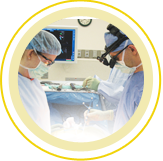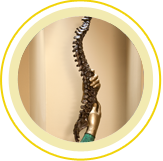Golfing and back pain seem to go hand in hand
Most golfers eventually experience back pain some reports indicate that as many as 80 percent of amateur golfers injure their backs at some point. Yet, many continue to play despite their pain, worsening their conditions.
Few golfers want to lose their favorite pastime to a back injury. However, the pain caused by ruptured discs, pinched nerves, spinal stenosis and sciatica can turn the act of swinging a golf club into a study in agony. By taking some simple lifestyle precautions, you can continue to enjoy golfing and help prevent becoming one of the thousands of golfers who experience back pain.
What causes back pain while playing golf?
Swinging a golf club requires a smooth, repetitive motion involving many different muscle groups in your neck, back, arms and legs. The motion must be performed extremely fast in order to be effective. This fast, repetitive motion can do a real number on your upper and lower back muscles in particular, which may not be strong enough to handle the strain put on them. Golfers tend to be very dedicated to their sport, which is another contributing factor to the prevalence of back pain in people who play golf. Excessive playing, especially for beginners, can lead to overuse injuries. While anyone who experiences back pain from any activity should stop and rest immediately, many avid golfers refuse to stop playing when injured.
Tips to avoid golf back pain
- Start slow: If you are new to golf or haven’t played in awhile, don’t overdo it. Start with short practice sessions on the driving range before tackling the whole course.
- Condition your body: Conditioning exercises that strengthen your core (the muscles in your back, abdomen, pelvis and buttocks) can go a long way toward preventing injuries. Try to focus on exercises that incorporate rotation to prepare your body for the torque experienced while swinging a golf club.
- Stretch: Golf requires a precise balance of strength and fl exibility. Incorporating stretching into your conditioning routine will help your muscles remain supple. Stretching during and after your golf game also can alleviate building muscle tension.
- Rest: This is an important part of keeping a healthy back that many golfers ignore. Swinging a golf club is not a movement that is natural to your body. Therefore, if you continue to play day after day, you are forcing your body to endure strain that it wasn’t designed to handle. Give yourself some time to recover between rounds. If you do feel back pain, stop playing until you can talk to your physician and rule out a serious injury. Golf is a favorite hobby for millions of people. Don’t lose out due to painful spinal conditions like bone spurs or herniated discs. If the low back pain continues for more than two to six weeks, a specific and definable problem may be the cause of the back pain and a medical professional should be consulted.
Treatment Options for Disc Injuries
Before considering other treatment options like surgery or chronic pain therapies, your doctor will likely recommend non-surgical treatments— options that may include specialized exercises, physiotherapy, epidural spinal injections and/or medication. The following are the most common surgical options offered today for lumbar spinal pain.
Micro-Discectomy
This is surgery to remove the herniated disc material that is pressing on a spinal nerve root or the spinal cord. Most of these procedures are done today as a micro-discectomy, which uses a special microscope to view the disc and nerves. Down time is usually minimal with these procedures and recovery is usually very good.
Laminectomy
Sometimes, before a discectomy, a small piece of bone (the lamina) from the affected vertebra may be removed. This enlarges your spinal canal to relieve pressure on the spinal cord or nerves and may allow the surgeon better access to the problem area.
Spinal Fusion
When the joint between the two vertebrae is very arthritic or the joint is very unstable, a surgeon may recommend a fusion. A spinal fusion surgery is designed to stop the motion at a painful vertebral segment, which in turn should decrease pain generated from the joint. This procedure has a much longer down time, since the patient must wait for the fusion to take and heal.
by Max W. Cohen
MD, FAAOS. Max W. Cohen, MD, FAAOS, the founding physician of Spine & Scoliosis Specialists, is the only doctor in the Triad with double fellowship training in spine and scoliosis surgery. He has treated tens of thousands of patients and performed thousands of surgeries since he began practicing in 2002. He completed his training at Cornell University’s prestigious Hospital for Special Surgery, the top-ranked orthopaedics hospital in the U.S.



